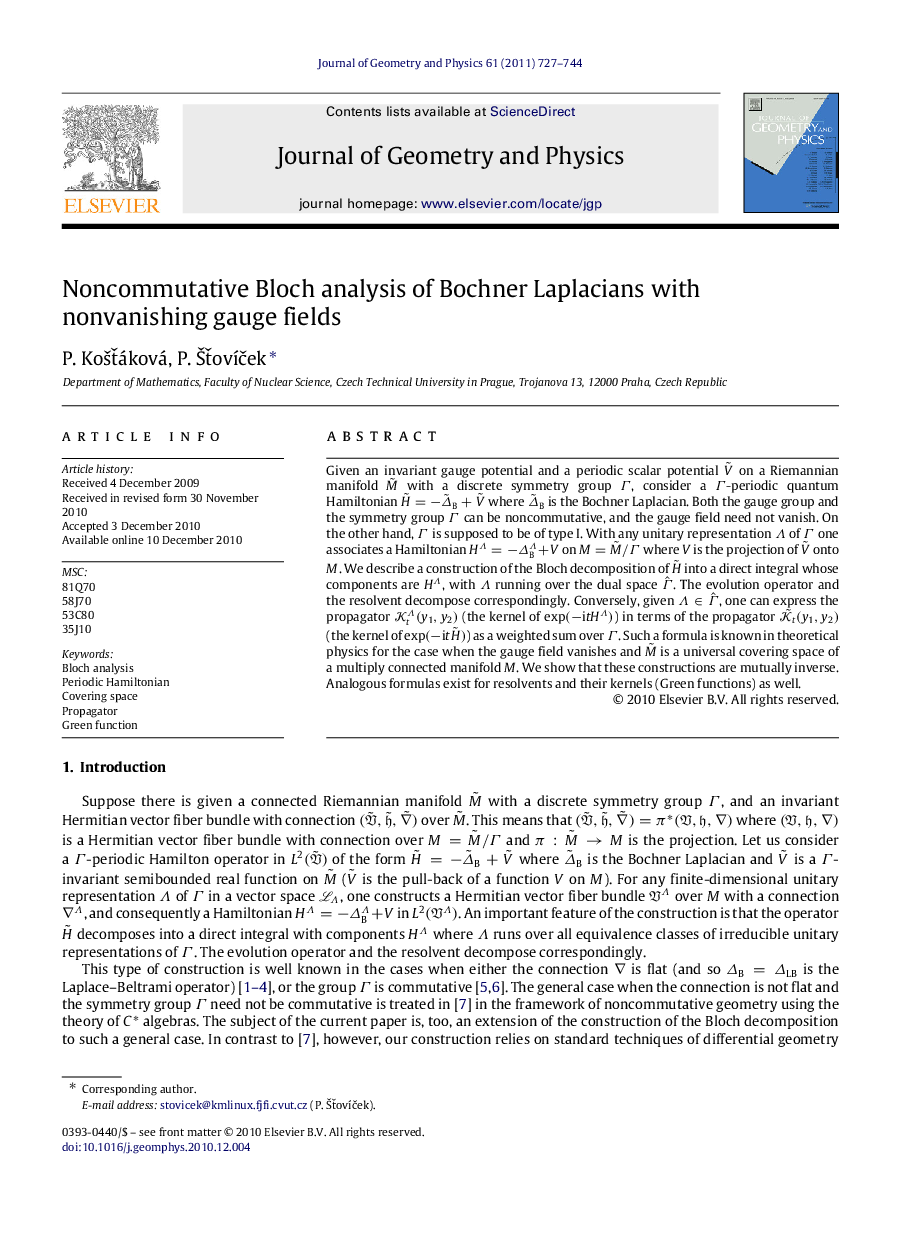| Article ID | Journal | Published Year | Pages | File Type |
|---|---|---|---|---|
| 1896550 | Journal of Geometry and Physics | 2011 | 18 Pages |
Given an invariant gauge potential and a periodic scalar potential Ṽ on a Riemannian manifold M̃ with a discrete symmetry group ΓΓ, consider a ΓΓ-periodic quantum Hamiltonian H̃=−Δ̃B+Ṽ where Δ̃B is the Bochner Laplacian. Both the gauge group and the symmetry group ΓΓ can be noncommutative, and the gauge field need not vanish. On the other hand, ΓΓ is supposed to be of type I. With any unitary representation ΛΛ of ΓΓ one associates a Hamiltonian HΛ=−ΔBΛ+V on M=M̃/Γ where VV is the projection of Ṽ onto MM. We describe a construction of the Bloch decomposition of H̃ into a direct integral whose components are HΛHΛ, with ΛΛ running over the dual space Γˆ. The evolution operator and the resolvent decompose correspondingly. Conversely, given Λ∈Γˆ, one can express the propagator KtΛ(y1,y2) (the kernel of exp(−itHΛ)) in terms of the propagator K̃t(y1,y2) (the kernel of exp(−itH̃)) as a weighted sum over ΓΓ. Such a formula is known in theoretical physics for the case when the gauge field vanishes and M̃ is a universal covering space of a multiply connected manifold MM. We show that these constructions are mutually inverse. Analogous formulas exist for resolvents and their kernels (Green functions) as well.
